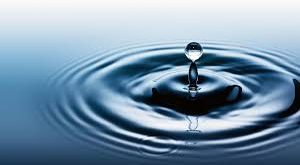It is believed that rivers eventually meet the sea or ocean. While this may be true for most rivers, there are certain exceptions. There are various examples where rivers never meet the ocean. In such cases, there can be three broad possibilities. The river can dry up in its journey, flow into the earth’s crust or merge with a lake that does not have an outlet. For better understanding of how such water bodies work, here’s a quick look at some rivers that never meet the ocean.
Lost River – This river originates in California and ends in Oregon. Lost River is 60 miles (97 km) long, of which, 14 miles is in California and 46 miles in Oregon. The river is used extensively for agricultural purposes through a network of canals, dams and pumps. Around 210,000 acres (85,000 ha) of agricultural land utilizes water from this river. Lost River is also a popular destination for fishing.
Mimbres River – This is 91-mile-long (146 km), originating in southwestern New Mexico. It originates from snowpack located along the south-western slopes of the Black Range. The Mimbres River Basin is spread across an area of 5,140 mi² (13,000 km²) and stretches all the way into northern Chihuahua. The river supports a range of animal species, several of which have been classified as ‘endangered’.
Okavango River – This is the fourth longest river in southern Africa. It originates in Angola’s sandy highlands, located at an altitude of 1,300 meters. It eventually flows into Botswana, covering a distance of 990 miles (1,600 km). Okavango River ends in Okavango Delta, which is an endorheic basin in the Kalahari Desert.
Onyx River – This is the longest river in Antarctica, measuring 20 miles (32 kilometers). The river is essentially a melt water stream, which discharges into Lake Vanda. Onyx River does not flow into the ocean, as its part of endorheic drainage.
Omo River – Outside the Nile Basin, this is the largest river in Ethiopia. The river starts and ends entirely within the boundaries of Ethiopia. It eventually discharges into Lake Turkana, which is located alongside the border with Kenya. The river is part of the Turkana endorheic basin.
Due to global warming and climate change, many rivers and lakes have already dried up or are in the process of drying up. In the future, there will be several more rivers that may fail to reach the ocean.
As a responsible citizen of planet earth, it is recommended that you avoid actions that may harm the environment. You can also contribute to NGOs that specialize in saving the world’s water bodies including rivers. And do share with family and friends, so that they can also be made aware of the threats facing our planet.
 Newspatrolling.com News cum Content Syndication Portal Online
Newspatrolling.com News cum Content Syndication Portal Online







